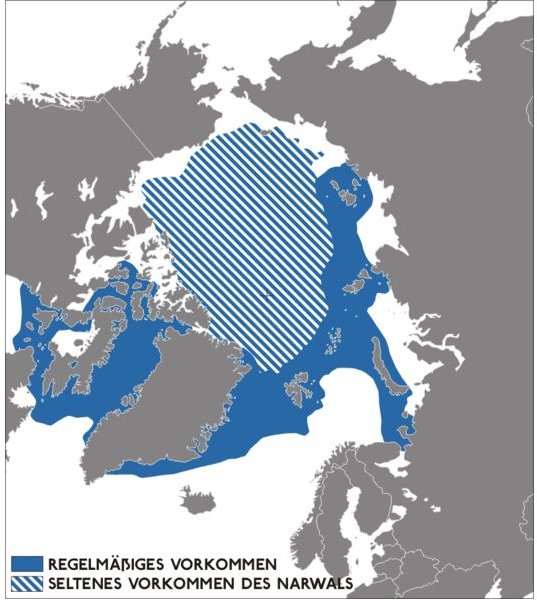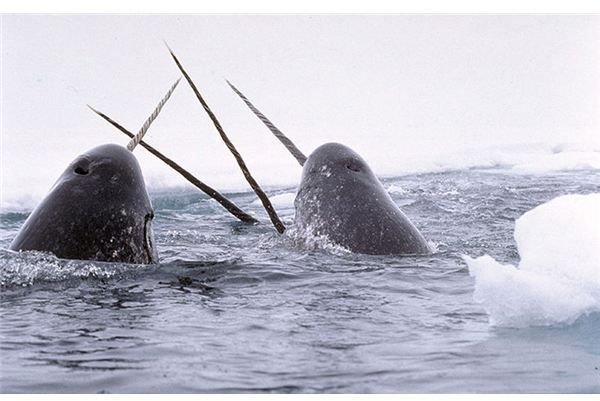Species Spotlight: The Narwhal Whale
There are few experiences in this world as mesmerizing as watching the sea unicorn glide through the crisp waters of the ocean with his long horn which has inspired legends and tall tales for hundreds of years among seafarers, fishermen, and dreamers alike. Like many of the wondrous inhabitants of the sea, the inspirational sea unicorn is being threatened by whalers and other human endeavors that could one day mean that the sea unicorn, like the familiar land variety, will only be a creature of legend. Learn more about this beautiful whale and what needs to be done to help them in this Species Spotlight focus on the Narwhal Whale.
Description:
Often referred to as the Moon Whale or the Polar Whale, the narwhal is one of two white whales in the family Monodontidae (the other being the beluga whale) although they do not reach their white color until adulthood. Newborns have a blueish gray coloring that turns to a darker, black blue by the time they reach adolescence and eventually lightening by the time they are adults. They can range between 13 to 20 feet in length weighing up to 3.5 tons. Narwhals are most noted for the large single tusk that grows on male members of the species that can reach between 8 to 10 feet in length earning the whale its suitable name as the unicorn of the sea. Some females may have a tusk as well; however, it is much smaller and not nearly as prominent in female narwhals as it is in the males.
Habitat and Diet:
Preferring cooler temperatures, narwhals inhabit the waters of the Arctic around Russian waters and in the Atlantic. There have also been notable populations off of the coast of Greenland and other surrounding waters as illustrated by this map demonstrating their

average range.
The diet of the narwhal whale is composed mostly of fish such as halibut and cod as well we as some squid and shrimp; an adaptation made necessary as commercial fisheries wipe out more and more of the fish stocks in their territories and around the world.
Scientific Classification:
Kingdom: Animalia
Phylum: Chordata
Class: Mammalia
Order: Cetacea
Suborder: Odontoceti
Family: Monodontidae
Genus: Monodon
Species: M. monoceros
Population, Conservation, and Threats:
Narwhals have a life span of around 30 to 40 years, with females reaching reproductive maturity at around age 5 and males a few years later at the age of 8.
Currently, the population of narwhal whales around the world is estimated to be somewhere around 50,000; however, as fishermen continue to deplete the world of fish and other marine life, hunters go unchecked, and their habitat dwindles these numbers are declining. Some nations, such as Greenland, have attempted to put quotas or limits on the hunting of the sea unicorn to no avail. Being sought after for their tusks as well as the meat, narwhals are often targeted by whalers and hunters and mercylessly slaughtered in spite of the fact that these intelligent and social animals are currently on the IUCN’s Red List. Pollution and climate change are also threatening the survival of the narwhal whale.
Many conservation and animal right’s groups around the globe are fighting to try to raise awareness to save the unicorn of the sea, whose fate is yet to be determined.
